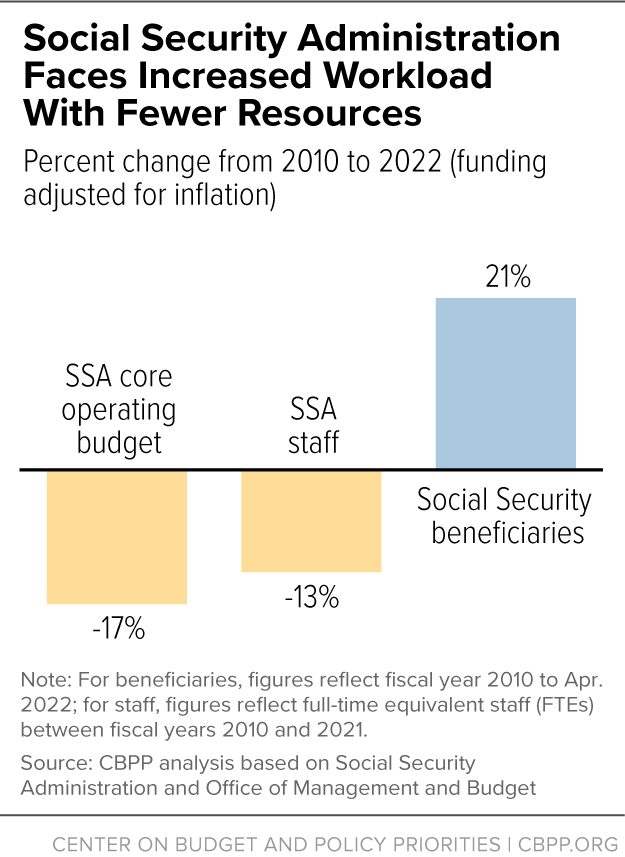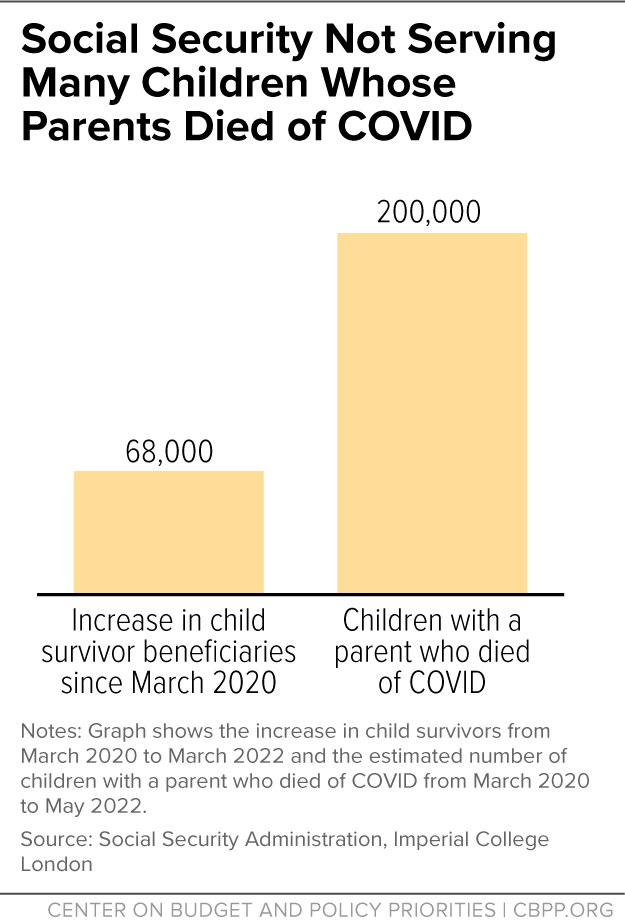BEYOND THE NUMBERS
The Social Security Administration (SSA) faces a customer service crisis, caused by over a decade of austere administrative funding and compounded by the COVID-19 pandemic. After SSA suspended in-person service for two years, when many applicants and beneficiaries struggled to access service, it recently reopened its doors to the public. But it did so underfunded and understaffed, and SSA’s customer service crisis will only worsen unless policymakers increase the agency’s resources in 2023.
Social Security's operating budget has been starved for over a decade. The 2011 Budget Control Act’s strict caps on discretionary funding led to cuts in SSA’s operating funds. And even though budget caps are no longer in effect, SSA’s operating budget increased only $275 million (2.5 percent) this year over last — a small fraction of the President’s request, or of the initial amounts proposed by congressional appropriators. And it’s well below the expected inflation rate for 2022.
Since 2010, SSA’s operating budget has shrunk 17 percent counting inflation, and its staff by 13 percent. (We’ve revised our estimate of the former from 14 to 17 percent to reflect updated Congressional Budget Office inflation estimates for 2022.) Some 1,400 staff departed in 2021 alone, at a time when budget shortfalls forced SSA to freeze hiring, and SSA expects to lose another 4,500 front-line employees this year. SSA staffing is already at its lowest level in 25 years. At the same time, SSA’s workloads have expanded dramatically, with the number of Social Security beneficiaries increasing by 11 million or 21 percent since 2010.
Fewer employees combined with higher demand makes it harder for people to access their Social Security benefits and other services. With thousands fewer SSA employees to answer the phones, take appointments, answer questions, solve problems, and process applications, Social Security’s customer service problems are growing:
- Over 1 million disability claims are pending at state disability determination service agencies (including claims at both the initial and reconsideration level). More people waiting for disability decisions, and longer waits for the decisions, take a toll on individuals, families, and communities. Applicants wait for over six months for a decision, on average. If not addressed soon, these problems will spill over into the disability appeals process — potentially bringing back the record backlogs and wait times that SSA successfully reduced to target levels at the end of 2021, with dedicated funding from appropriators.
- At least 500,000 fewer people are receiving Social Security or Supplemental Security Income (SSI) disability benefits than if awards had continued at pre-pandemic levels. SSI applications and awards for both older and disabled beneficiaries fell to record lows, suggesting a surge might be coming as the country continues to emerge from the pandemic. Applications fell the most among those who most need in-person assistance and weren’t able to access it when SSA’s field offices were closed: people who are elderly, experiencing homelessness, or have limited English proficiency. Meanwhile, COVID-19 has been shown to cause serious long-term effects in some COVID survivors, making some of them eligible for disability benefits.
- Nearly half of calls to SSA go unanswered because callers hang up when the wait is too long, or they get busy signals. Sometimes callers go weeks without being able to reach an SSA employee for help.
- COVID widows and orphans have struggled to access Social Security benefits after losing a breadwinner to the virus. Only about one-third of minor children who had a parent die of COVID are receiving Social Security survivors benefits so far. As the second chart shows, an estimated 200,000 children have had a parent die of COVID, yet the number of children receiving Social Security survivors benefits grew by only 68,000 from March 2020 to March 2022.
SSA’s lackluster 2022 appropriation puts even greater pressure on customer service. With its operating budget not keeping up with inflation, the agency will lose even more staff and will continue to strictly limit overtime, causing wait times and backlogs to grow further.
Policymakers can begin to address the crisis by significantly increasing the agency’s appropriation for 2023. President Biden requested $1.3 billion or 12 percent more than the 2022 level for SSA’s operating budget, which, according to the agency’s projections, would only allow SSA to maintain roughly the same level of processing times and pending claims as in 2021. To actually improve service, SSA’s commissioner estimates, the agency would need $2.3 billion more than the 2022 level. Appropriators will need to make a strong and sustained investment in SSA to better serve the workers who pay into Social Security and the beneficiaries who have earned its protection.


